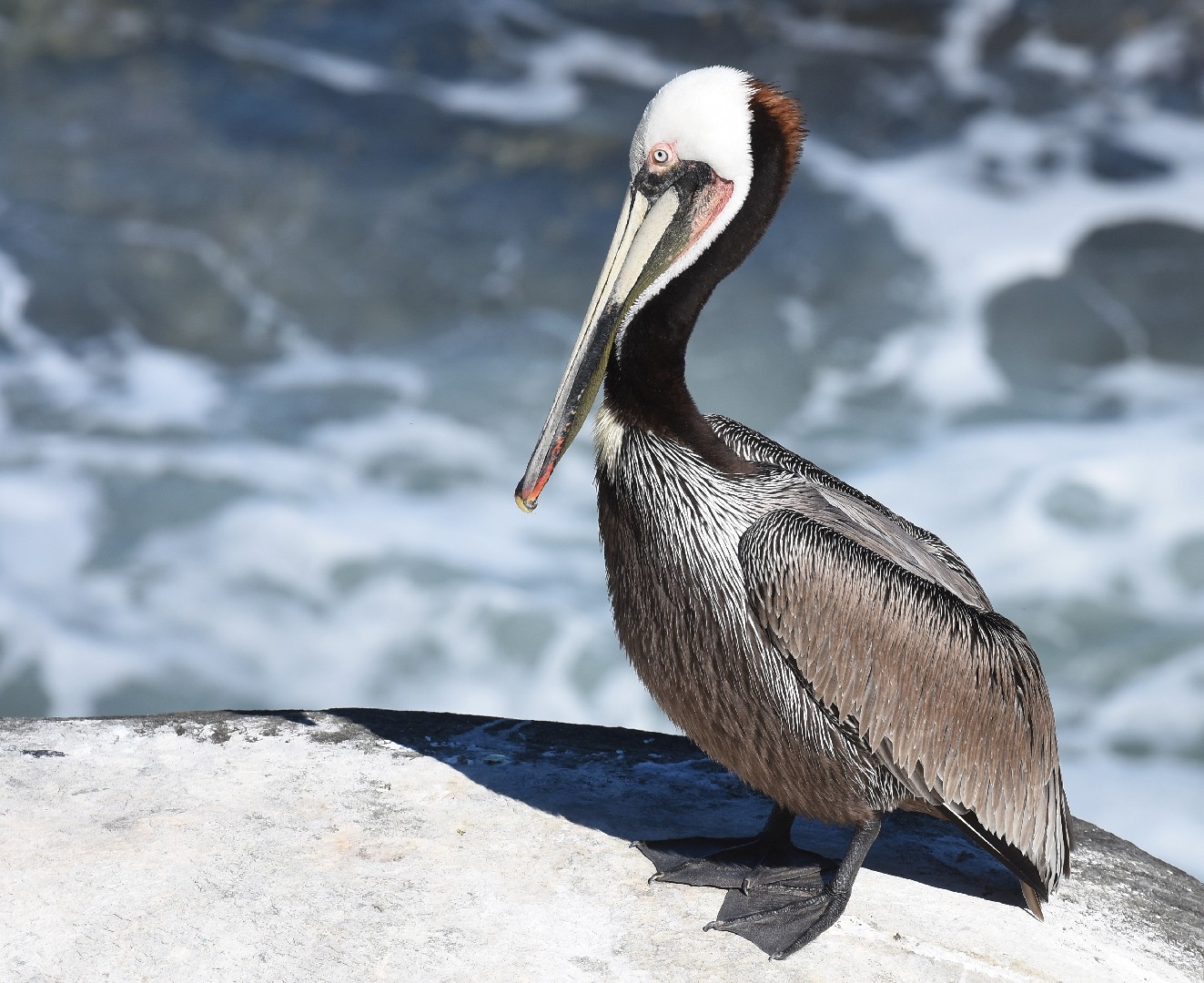Brown Pelican
A species of Pelicans Scientific name : Pelecanus occidentalis Genus : Pelicans
Brown Pelican, A species of Pelicans
Botanical name: Pelecanus occidentalis
Genus: Pelicans
 Photo By Andy Reago & Chrissy McClarren , used under CC-BY-2.0 /Cropped and compressed from original
Photo By Andy Reago & Chrissy McClarren , used under CC-BY-2.0 /Cropped and compressed from original Description
The brown Pelican is a large seabird frequently found in and around marine and estuarine habitats as well as manufactured docks and jetties. They can be seen effortlessly gliding in the air along the coast when not feeding. These birds have a unique feeding behavior where they dive head-first into the water, using their throat pouches to capture their prey. They often nest in large colonies on islands with no natural predators.
Size
1.2 - 1.3 m
Life Expectancy
30 years
Nest Placement
Tree
Clutch Size
2 - 4 eggs
Incubation Period
1 brood
Number of Broods
29 - 35 days
Nestling Period
77 - 84 days
Feeding Habits
Brown Pelican are piscivorous, diving from up to 65 feet to catch schooling fish like menhaden and anchovies, crucial for nesting success. Brown Pelican expand their throat pouches to trap prey, feeding within 12 miles of shore or over deeper Pacific waters. Occasionally, brown Pelican seize fish at the surface, scavenge, or prey on invertebrates and other birds' eggs and young.
Habitat
Brown Pelican favor coastal marine ecosystems within 20 miles of shorelines. Ideal habitats for brown Pelican include estuaries, nearshore waters, and mangrove swamps, as well as shallow bays. They nest on various islands, like barrier and mangrove islets, and seek resting sites on coastal structures such as sandbars and jetties, thriving in warm, temperate sea-level climates.
Nest Behavior
During courtship, the male brown Pelican performs displays to attract females, choosing nesting sites on the ground or trees. The female constructs the nest over 7–10 days with materials provided by the male. The parents focus on incubation and continue nest maintenance, slightly rearranging as needed for the duration.
Nest Characteristics
Brown Pelican's nests can be on the ground amongst dense vegetation or in exposed treetops. Ground nests might be simple depressions or bulky structures made of sticks, grass, and seaweed. Tree nests are typically sturdy platforms of sticks lined with grass or leaves. They measure up to 30 inches across, 9 inches high, with an interior of about 12 inches wide and 4 inches deep.
Dite type
Piscivorous
People often ask
Migration Overview
Most brown pelican populations are resident (nonmigratory) and dispersive (species moving from its birth site to its breeding site, or its breeding site to another breeding site), although some migration is observed, especially in the northern areas of its range, but these movements are often erratic, depending on local conditions. Southwards, they are vagrants (found outside its usual range) in Tierra del Fuego. They have been recorded off the eastern coast of Brazil, in Alagoas. 
General Info
Feeding Habits
Bird food type
Behavior
Brown Pelican are adroit aviators often seen flying in coordinated V-forms or lines just skimming the water's surface. As adept swimmers with a graceless terrestrial locomotion, they engage in spectacular plunge-diving to snare fish, a behavior unique to their species and the Peruvian Pelican. These diurnal foragers show nocturnal tendencies during full moons. They are sociable, forming vast breeding colonies on predator-free islets, with monogamous pairings each season. Brown Pelican practice foot-incubation of eggs and initially provide regurgitated fish to their offspring. Young brown Pelican achieve independence after three months, yet don't breed until 3 to 5 years old. Throughout, brown Pelican must vigilantly guard their catch from kleptoparasitic gulls and terns.
Distribution Area
The brown pelican lives on the Atlantic, Gulf, and Pacific Coasts in the Americas. On the Atlantic Coast, it is found from Nova Scotia to the mouth of the Amazon River. Along the Pacific Coast, it is found from British Columbia to south-central Chile, including the Galapagos Islands. After nesting, North American birds move in flocks further north along the coasts, returning to warmer waters for winter. In the non-breeding season, it is found as far north as Canada. 
Species Status
Starting in the 1940s with the invention and extensive use of pesticides such as DDT, the brown pelican population had drastically declined due to a lack of breeding success. By 1985, its population in the eastern United States, including Florida, Georgia, South Carolina, Alabama, and northward along the Atlantic Coast, had recovered and the species was removed from the Endangered Species List. It is still listed as endangered in the Pacific Coast region of its range and in the southern and central United States. 

 Photo By Andy Reago & Chrissy McClarren , used under CC-BY-2.0 /Cropped and compressed from original
Photo By Andy Reago & Chrissy McClarren , used under CC-BY-2.0 /Cropped and compressed from original Scientific Classification
Phylum
Chordates Class
Birds Order
Pelicans and Relatives Family
Pelicans Genus
Pelicans Species
Brown Pelican